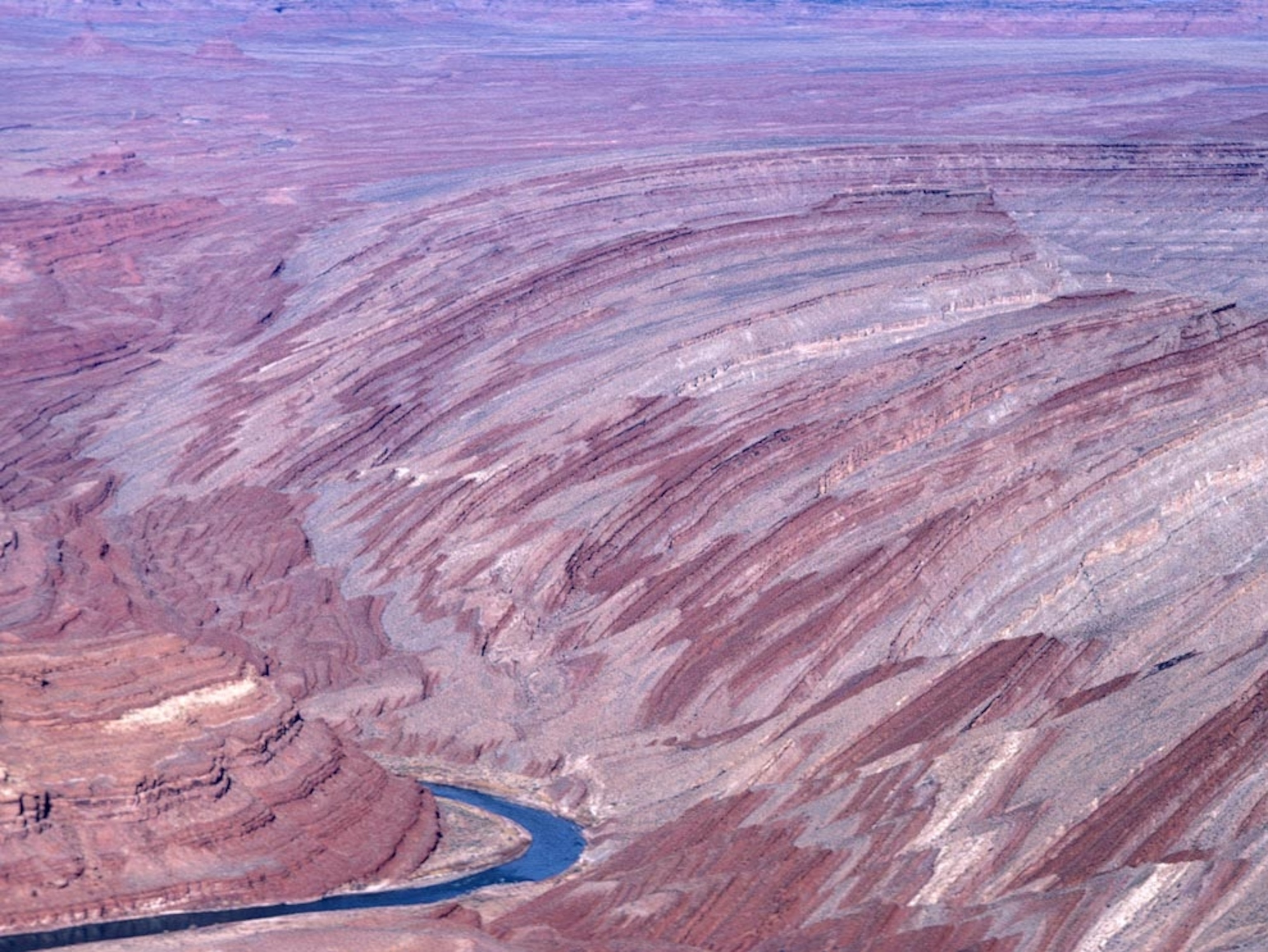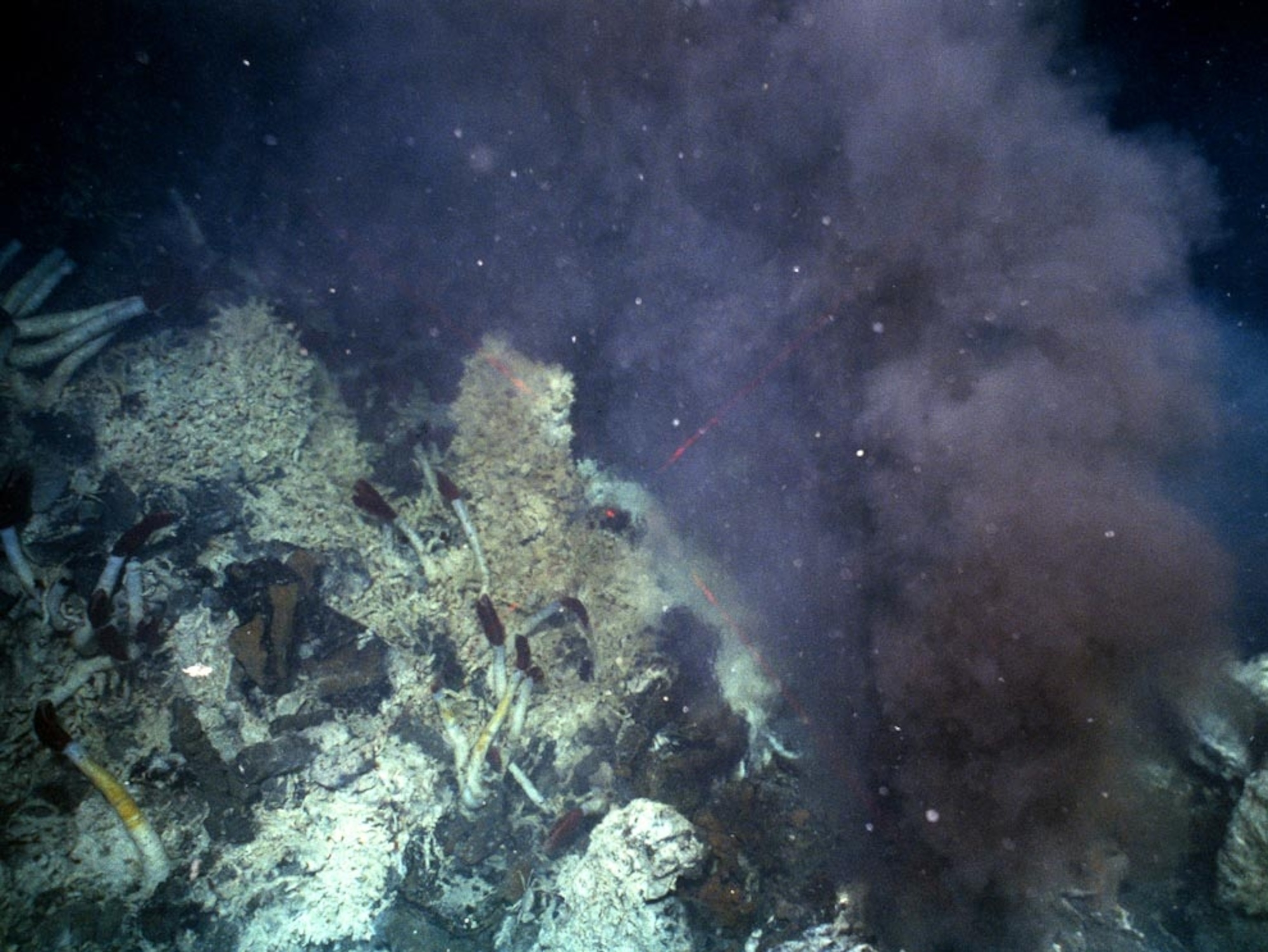
Hidden earthquake risk found lurking beneath Los Angeles
The fault was once thought dead, but recent research suggests it’s likely still active—and poses a hazard to the metropolis above.
The ports of Los Angeles and Long Beach bustle with activity—their colorful array of shipping containers are stacked and unstacked in a never-ending, multibillion-dollar game of Tetris. But a previously overlooked danger lurks below this frenzy: A fault capable of generating earthquakes magnitude 6.3 or greater.
The Wilmington fault, as it’s called, is an elusive type of fracture. Unlike many faults, which crack Earth’s surface like an egg, the Wilmington fault is “blind,” which means it’s concealed beneath the surface, making it especially difficult to study. So while scientists have long known the fault is present—stretching 12.4 miles under southern Los Angeles into San Pedro Bay—it was presumed to have sat quiet for millions of years.
Now, a new analysis of the system, published in Bulletin of the Seismological Society of America, suggests that isn’t the case. Using a cluster of clues incorporated into a three-dimensional model, the study authors posit that the fault has been active much more recently than once thought—and likely still poses a risk to people on the surface.
“I hope bringing attention to it can potentially increase safety in the region,” says study author Franklin Wolfe, a doctoral candidate who is part of Harvard’s structural geology and Earth resources group.
While the fault is slow moving and likely ruptures only once every 3,200 to 4,700 years, it underlies two of the United States’ busiest ports. And researchers worry that the Wilmington could link with other nearby faults to produce a temblor as strong as a magnitude 7.4.
The study also emphasizes just how many faults crisscross Southern California, adds Chris Goldfinger, an earthquake geologist at Oregon State University, who was not part of the research team. Scientists have made major strides characterizing the geology of the region, but there’s still more to do.
“Just by itself, if you take the implications of a relatively slow-moving fault like this, it won’t change the hazard very much,” he says. But the discovery that the Wilmington fault is likely still active, he says, “sort of leaves this big hanging question mark: What about all the others?”
Tectonic smashup
When most people think about California earthquakes, they think of the San Andreas fault. The mighty feature formed some 30 million years ago as the North American plate swallowed almost all of what’s known as the Farallon plate. Ever since, the North American plate has met face to face with the Pacific plate, the two grinding past each other at a boundary called a strike-slip fault. (Learn what's happening as the Farallon plate dies under Oregon.)
This sent North America for a wild ride: Its west coast first stretched out then sections later compressed. That means the faults in the basin where Los Angeles sits today first slid in one direction and then reversed, forming thrust faults in which blocks of land are shoved on top of others.
It’s as if “you put the whole thing it in a vise and started turning the handle,” says Goldfinger.
Related: See our stunning planet in action












One such thrust fault was the focus of this latest work, but it’s still hidden below ground. Slow growing and breaking through soft sedimentary rocks, the Wilmington fault hasn’t yet breached the surface.
“Sorting out where we have these sneaky active faults is a challenge,” says Kate Scharer, an earthquake geologist at the U.S. Geological Survey who was not part of the research team. In urban L.A. buildings and roads make surveying difficult—and the lack of a surface break adds another layer of complexity to the hunt for slow-moving faults.
Assembling the geologic jigsaw
By sending waves of energy that penetrate the ground and watching how they bounce back—a process similar to an ultrasound—researchers can examine the warping of different layers and read the rocks’ deep geologic past, Wolfe explains. The early versions of these Earth sonograms came from the oil and gas industry, which was interested in finding the ancient organic material trapped beneath the folded layers that would produce petroleum.
These images revealed a distinct subsurface fold above the fault, which points to a period of early activity. As the basin is squished, stresses build until they hit a breaking point and the Earth gives way both as movement along the fault in ground-rattling earthquakes, as well as in folding of the rock layers—like the pages of a paperback that’s squeezed from the sides, says Kimberly Blisniuk, an earthquake geologist at San José State University who was not involved in the work.
But these curved layers were capped with what seemed to be nearly horizontal rocks. “That’s what led to this idea that it’s no longer active,” says study author John Shaw, a structural geologist at Harvard University with extensive experience studying the complexities of blind-thrust faults.
Hints of a fold linger in the shallow rocks at the southern tip of the fault, Shaw says. But the instruments used in the oil and gas industry focus on the deeper rocks, where petroleum is most likely to lurk. To know if the fault was recently active, they needed better images of the layers just beneath the surface.
This next piece of the geologic jigsaw clicked into place at a conference about a decade back when Shaw ran into Dan Ponti, a co-author on the new study and a geologist with the USGS. Ponti had been mapping groundwater near California’s coast and noticed something curious: Some of the shallow rock layers of the aquifer were warped.
“He didn’t have an immediate understanding or explanation of why that would be,” Shaw says. Located near the Wilmington fault, it was possible the folds in these shallow layers pointed to recent activity. But the direct connection between these two-dimensional slices of Earth and the overall fault structure hadn’t yet fallen into place.
That’s where Wolfe came in. As a first-year graduate student at Harvard University, he eagerly began compiling all the data he could get his hands on, including the recent USGS seismic profiles, incorporating the information into a three-dimensional model. Finally, the picture was clear: It was all part of the Wilmington fault.
Evil earthquake twin
From their analysis, the team estimates the Wilmington fault has moved an average of just 0.16 millimeters per year over the last 500,000 years, and it likely hosts an earthquake every few thousand years. For comparison, the San Andreas fault is estimated to move 30 to 50 millimeters each year, with an average time between earthquakes of around 150 years. (Learn about an earthquake in Turkey that lasted 50 days.)
“This thing is the slowest horse on the race track,” says Scharer. “The party’s over, and everyone goes home before this thing comes back to the stables—but that doesn’t mean it doesn’t come back.”
That is, while it’s slow moving, it shouldn’t be ignored. For one, there’s the type of motion thrust faults produce, which is more of a vertical shove than the horizontal back and forth of a strike-slip fault, Wolfe says. Buildings can sway a little, but the up-down motions can be devastating. Such intense impacts were seen during the magnitude 6.7 Northridge earthquake that rattled from a blind-thrust fault in 1994, killing more than 60 people and injuring thousands.
The Wilmington fault is also located directly below two important ports and other infrastructure, Shaw notes. And a disruption of operations could have major impacts. While more work is necessary to further tease apart the Wilmington’s earthquake potential, the latest study emphasizes the import of studying slow-moving blind faults.
“While we’re all focused on strike-slip faults, which come to the surface,” Goldfinger says, “the L.A. basin’s evil twin hiding in the subsurface might be just as hazardous.”
Related Topics
You May Also Like
Go Further
Animals
- How can we protect grizzlies from their biggest threat—trains?How can we protect grizzlies from their biggest threat—trains?
- This ‘saber-toothed’ salmon wasn’t quite what we thoughtThis ‘saber-toothed’ salmon wasn’t quite what we thought
- Why this rhino-zebra friendship makes perfect senseWhy this rhino-zebra friendship makes perfect sense
- When did bioluminescence evolve? It’s older than we thought.When did bioluminescence evolve? It’s older than we thought.
- Soy, skim … spider. Are any of these technically milk?Soy, skim … spider. Are any of these technically milk?
Environment
- Are the Great Lakes the key to solving America’s emissions conundrum?Are the Great Lakes the key to solving America’s emissions conundrum?
- The world’s historic sites face climate change. Can Petra lead the way?The world’s historic sites face climate change. Can Petra lead the way?
- This pristine piece of the Amazon shows nature’s resilienceThis pristine piece of the Amazon shows nature’s resilience
- Listen to 30 years of climate change transformed into haunting musicListen to 30 years of climate change transformed into haunting music
History & Culture
- Meet the original members of the tortured poets departmentMeet the original members of the tortured poets department
- Séances at the White House? Why these first ladies turned to the occultSéances at the White House? Why these first ladies turned to the occult
- Gambling is everywhere now. When is that a problem?Gambling is everywhere now. When is that a problem?
- Beauty is pain—at least it was in 17th-century SpainBeauty is pain—at least it was in 17th-century Spain
Science
- Here's how astronomers found one of the rarest phenomenons in spaceHere's how astronomers found one of the rarest phenomenons in space
- Not an extrovert or introvert? There’s a word for that.Not an extrovert or introvert? There’s a word for that.
- NASA has a plan to clean up space junk—but is going green enough?NASA has a plan to clean up space junk—but is going green enough?
- Soy, skim … spider. Are any of these technically milk?Soy, skim … spider. Are any of these technically milk?
Travel
- Could Mexico's Chepe Express be the ultimate slow rail adventure?Could Mexico's Chepe Express be the ultimate slow rail adventure?
- What it's like to hike the Camino del Mayab in MexicoWhat it's like to hike the Camino del Mayab in Mexico







